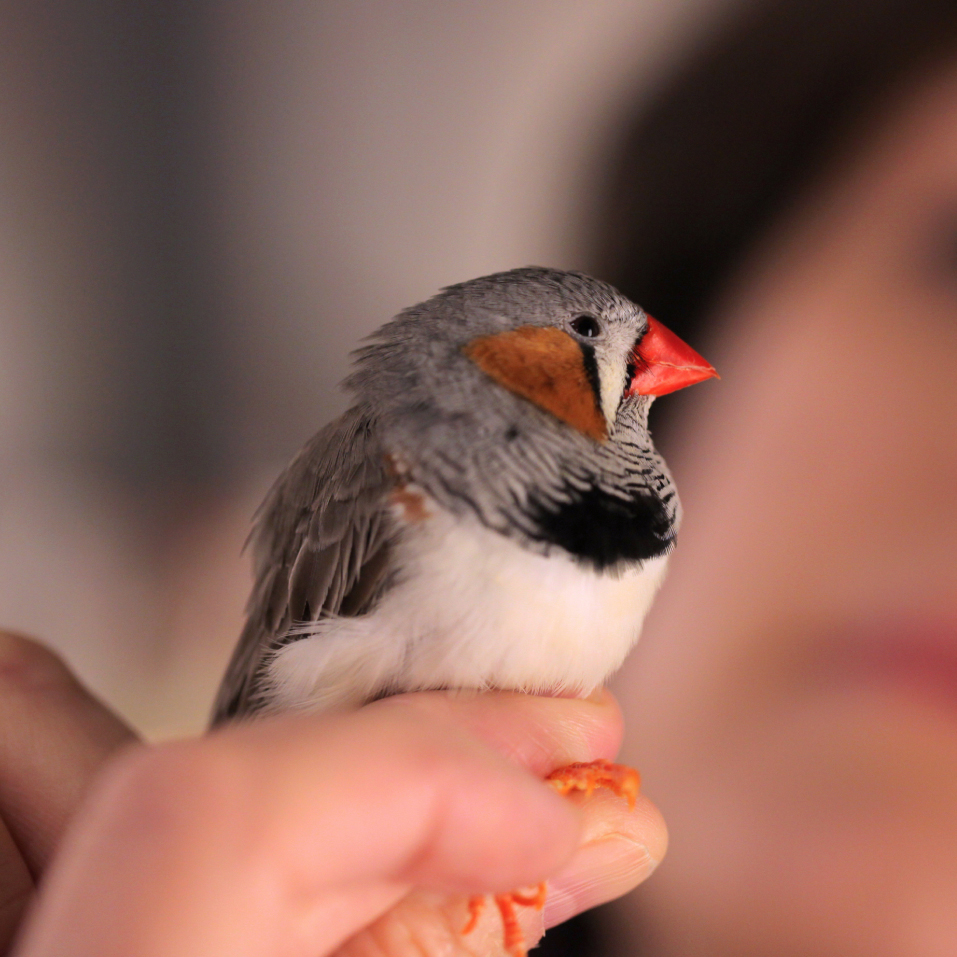In a scientific first, Columbia scientists have demonstrated how the brains of young songbirds become tuned to the songs they learn while growing up.
The results of this study, published today in Nature Neuroscience, illustrate the extraordinary flexibility of the growing brain. Because the brain region that listens to sounds, the auditory cortex, is similar in birds and mammals, this study could help to explain why we learn our own native language so easily but struggle to learn languages we did not hear when we were young.
“The language sounds we learn as infants shape the way we hear for the rest of our lives, and the vocal sounds that songbirds hear while young may have the same effect,” said Sarah M.N. Woolley, PhD, a principal investigator at Columbia University’s Mortimer B. Zuckerman Mind Brain Behavior Institute and the paper’s senior author. “By mapping these birds’ auditory systems as they learn their songs, we hope to decipher the mechanisms that guide our own capacity to learn speech.”
Move a five-year-old child from Madrid to New York, and within a month she can become nearly fluent in English. Her parents, meanwhile, may struggle to keep up. Why?
No other animal’s communications can match the complexity and diversity of human language. But the trills, peeps and warbles sung by the more than 5,000 species of songbirds come close. The most commonly studied songbird species is the zebra finch. A young male zebra finch learns his song from his father by listening and imitating during the first three months of life.
“When first learning to sing, the juvenile’s song is unstructured, similar to the way a human baby babbles before producing words,” said Jordan Moore, PhD, a postdoctoral research scientist in the Woolley lab and the paper’s first author. “But by the time the bird nears adulthood, it reproduces the more complex aspects of its father’s song. We were interested in what is happening in the brain during this song learning period.”
In a series of experiments, Drs. Moore and Woolley studied both the iconic zebra finch and the long-tailed finch, a species not commonly studied in the lab that sounds very different from its zebra finch cousin. The researchers examined brain cells called neurons that comprise the auditory cortex, the brain region that listens to sound.
While monitoring that neural activity, the researchers played recordings of songs to zebra finches and long-tailed finches. They then played synthetic sounds that were designed to match certain acoustic features of each species’ songs.
From this, they identified a neural circuit in the auditory cortex where the cells’ responses became specialized for the songs the birds learned.
Zebra Finch
Adult zebra finch tutor (left) and a zebra finch pupil (right) who has learned his species' song from his biological father (Credit: Jordan Moore/Woolley lab/Columbia's Zuckerman Institute).
Long-tailed Finch
Adult long-tailed finch tutor (left) and a long-tailed finch pupil (right) who has learned his species' song from his biological father (Credit: Jordan Moore/Woolley lab/Columbia's Zuckerman Institute).
“After identifying this circuit, we wanted to understand its flexibility,” said Dr. Woolley, who is also a Columbia professor of psychology. “How does this circuit change over time as the bird learns and matures? And how do these changes integrate the bird’s biology and its experience with the song its tutor sings?”
To find out, the researchers placed eggs from the two species in the nests of a third songbird species, the Bengalese finch. The team could then assess whether these cross-fostered zebra and long-tailed finches — who were now being raised by Bengalese finches — learned the songs of their adoptive fathers.
“That is exactly what happened,” said Dr. Woolley. “The juvenile zebra and long-tailed finches began to sing like their Bengalese finch adoptive fathers and ignored the songs of their biological fathers, whom we had placed across the room and so were still within earshot.”
Bengalese Finch
Standard song recorded from a Bengalese finch tutor (Credit: Jordan Moore/Woolley lab/Columbia's Zuckerman Institute).
Cross-fostered Zebra and Long-tailed Finches
Songs recorded from zebra finch (left) and long-tailed finch (right) pupils that were raised and tutored by Bengalese finch adoptive fathers (Credit: Jordan Moore/Woolley lab/Columbia's Zuckerman Institute).
Auditory neurons in the cross-fostered birds responded more strongly to Bengalese finch song than did neurons in birds that had learned their own species’ songs. Those same neurons showed specialized tuning for the acoustic features of Bengalese finch song. This showed that the selectivity of one song versus another is shaped by what the bird learned to sing — and not simply the species to which it belongs.
While remarkably adept at copying Bengalese finch song, the cross-fostered zebra and long-tailed finches did show some limitations. They copied individual sounds, or syllables, with ease, but they never quite grasped the syntax of their adoptive parents’ song. Drs. Moore and Dr. Woolley are currently investigating the reasons for this.
Though focused on birds, today’s study also offers intriguing insights into human speech and language.
“Move a five-year-old child from Madrid to New York, and within a month she can become nearly fluent in English. Her parents, meanwhile, may struggle to keep up,” said Dr. Woolley. “Why? This extraordinary adaptability of the young brain is something we are actively working to understand.”
###
This paper is titled “Emergent tuning for learned vocalizations in auditory cortex.”
This research was supported by the National Institutes of Health (DC009810) and the National Science Foundation (IOS-1656824).
The authors report no financial or other conflicts of interest.



